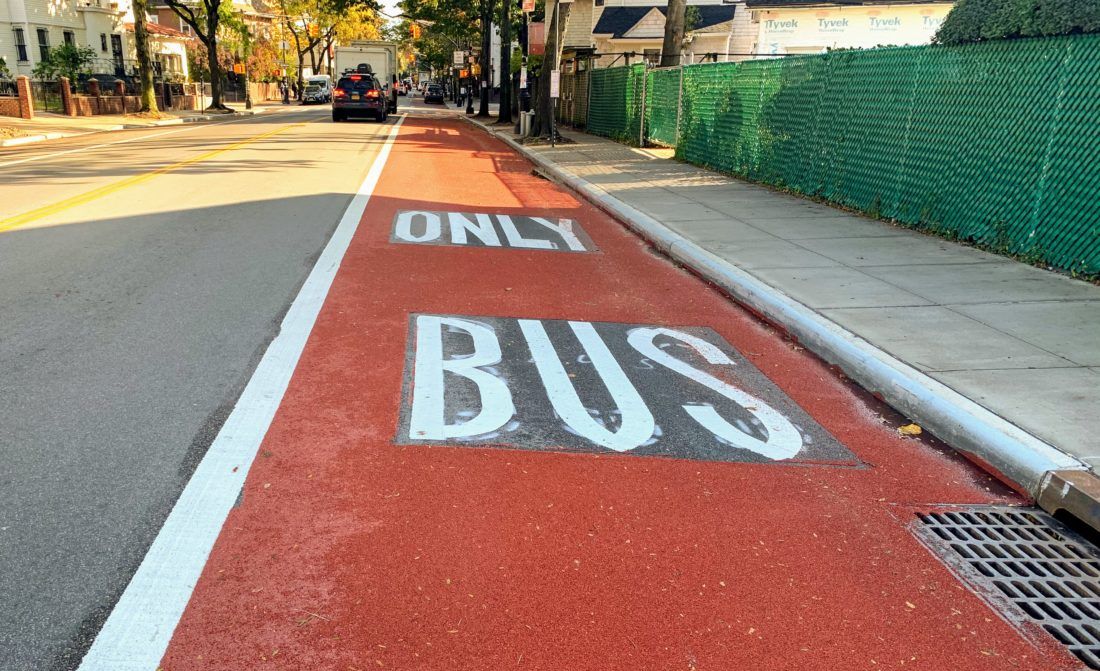Poll Finds Most Brooklyn Voters Would Trade Parking For Pedestrian and Transit Improvements

A majority of voters in Brooklyn–and across the city–would give up parking for pedestrian and public transit improvements.

That’s according to a new poll commissioned by the safe streets advocacy group Transportation Alternatives and conducted by the Siena College Research Institute, which surveyed 805 registered city voters late last year.
The poll found that a strong majority of Brooklyn voters support adding bus lanes (58% of respondents), wider sidewalks (59%), benches (79%), children’s play areas (81%) and greenery (81%) to their neighborhood, even if doing so would result in fewer parking spots.
The poll also found broad support by Brooklyn voters for creating more protected bike lanes and expanding the city’s open streets program, in which thoroughfares are closed to through traffic to allow space for pedestrians and cyclists. 64% also said outdoor seating for restaurants was “very” or “somewhat” important.

Perhaps even more striking, large majorities of car owners said they supported many of the changes: 61% of car owning-respondents said they supported adding protected bike lanes, and 57% said they supported the expansion of the open street program. (Support for dedicated bus lanes was more qualified, with 48% of car owners supporting their expansion.)
“While the majority of our city’s streets are devoted to moving and parking vehicles, the clear majority of New Yorkers want streets that prioritize people,” said Danny Harris, Transportation Alternatives’ Executive Director, in a statement announcing the poll results.
“City streets must become fairer, healthier, safer, and put people first as we recover from the pandemic. With this latest polling, it’s clear that candidates running with bold plans to reimagine New York City’s streetscape will have public opinion on their side.”
The poll, which Siena conducted via telephone, comes roughly six months before New York’s primary elections when New Yorkers will select their likely next mayor, comptroller, borough presidents, and council members.

The Brooklyn numbers generally mirrored those of the city as a whole; nearly all the results were closer than the poll’s 3.9% margin of error. The one statistically significant exception: sitting. 79% of Brooklyn voters said they “strongly” or “somewhat” supported efforts to create more benches and other places to sit, the highest among any borough and 4% more than the citywide average.
Brooklyn also topped the other boroughs in number of respondents who said they’d ridden a bike in the last month, at 35%.
The survey results generally held across income level and ethnicity; in several instances, Black and Latino voters were more supportive of the changes than their white counterparts.
According to the poll, for example, 87% of Latino voters and 71% of Black voters strongly or somewhat supported adding protected bike lanes to streets in their neighborhood. 61% of white voters said the same.
(Voters of color were slightly underrepresented in the poll relative to their share of the city’s population, though Siena said they adjusted the data to account for this.)

More dramatic were the splits across party lines: only 29% of registered Republicans said they supported adding protected bike lanes, compared to 74% of Democrats. Support for seating, playgrounds and crosswalk safety were more bipartisan—all were supported by at least 67% of respondents from both parties.
“We need to reimagine our streetscape to make New York a more livable city, and this poll shows that New Yorkers know that too and they want city government to act boldly to make it happen,” City Council Speaker Corey Johnson said in a statement.
“Open Streets and Open Restaurants opened our eyes to the untapped potential when it comes to using our street space in more fun and more efficient ways for New Yorkers and the small businesses we need to support. Bike lanes and bus lanes are good policy and good politics too, and the Council will keep fighting for them.”




